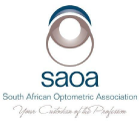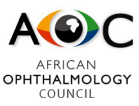Original Research
A frequency analysis of cone characteristics for the different stages of keratoconus
African Vision and Eye Health | Vol 74, No 1 | a302 |
DOI: https://doi.org/10.4102/aveh.v74i1.302
| © 2015 Alvin J. Munsamy, Vanessa R. Moodley, Priyadeshni Naidoo, Tendayi R. Mangwarara, Radeeyah Abdullah, Darushen Govender, Phikolethu Dlamini
| This work is licensed under CC Attribution 4.0
Submitted: 05 March 2015 | Published: 19 August 2015
Submitted: 05 March 2015 | Published: 19 August 2015
About the author(s)
Alvin J. Munsamy, Discipline of Optometry, University of KwaZulu-Natal, Westville Campus, South AfricaVanessa R. Moodley, Discipline of Optometry, University of KwaZulu-Natal, Westville Campus, South Africa
Priyadeshni Naidoo, Discipline of Optometry, University of KwaZulu-Natal, Westville Campus, South Africa
Tendayi R. Mangwarara, Discipline of Optometry, University of KwaZulu-Natal, Westville Campus, South Africa
Radeeyah Abdullah, Discipline of Optometry, University of KwaZulu-Natal, Westville Campus, South Africa
Darushen Govender, Discipline of Optometry, University of KwaZulu-Natal, Westville Campus, South Africa
Phikolethu Dlamini, Discipline of Optometry, University of KwaZulu-Natal, Westville Campus, South Africa
Abstract
Background: The stages of keratoconus can be classified according to the degree of corneal conicity as either early or advanced, or morphologically by the shape of the cone. Knowledge of the different cone characteristics for the different stages of keratoconus may assist practitioners in diagnosing and managing these patients.
Aim: To describe the cone characteristics for the different stages of keratoconus.
Methods: In this retrospective study, a sample of 190 eyes from 106 cases of previously diagnosed keratoconic patients was analysed. The stage of keratoconus and cone characteristics, namely: cone location, cone decentration, morphology, and topographical patterns were analysed using an Oculus 3M corneal topographer.
Results: Our study revealed that for all stages of keratoconus centrally located cones were the most frequent, with corneal apical decentration between 0 mm and 2 mm. Frequency analysis revealed that nipple cones were most frequent in all stages. Topographical pattern frequencies revealed a wide distribution amongst the different corneal patterns in all stages of keratoconus.
Conclusion: Cone analysis should be of consideration to the contact lens practitioner when deciding on management of the condition. It additionally serves to compliment the clinical signs such as nerve visibility, Fleischer’s ring, Vogt’s striae and corneal scarring.
Aim: To describe the cone characteristics for the different stages of keratoconus.
Methods: In this retrospective study, a sample of 190 eyes from 106 cases of previously diagnosed keratoconic patients was analysed. The stage of keratoconus and cone characteristics, namely: cone location, cone decentration, morphology, and topographical patterns were analysed using an Oculus 3M corneal topographer.
Results: Our study revealed that for all stages of keratoconus centrally located cones were the most frequent, with corneal apical decentration between 0 mm and 2 mm. Frequency analysis revealed that nipple cones were most frequent in all stages. Topographical pattern frequencies revealed a wide distribution amongst the different corneal patterns in all stages of keratoconus.
Conclusion: Cone analysis should be of consideration to the contact lens practitioner when deciding on management of the condition. It additionally serves to compliment the clinical signs such as nerve visibility, Fleischer’s ring, Vogt’s striae and corneal scarring.
Keywords
keratoconus;cone characteristics; cone apex; cone morphology;cone topographical patterns
Metrics
Total abstract views: 5282Total article views: 10679
Crossref Citations
1. Simultaneous Estimation of Corneal Topography, Pachymetry, and Curvature
Farzana Nasrin, Ram V. Iyer, Steven M. Mathews
IEEE Transactions on Medical Imaging vol: 37 issue: 11 first page: 2463 year: 2018
doi: 10.1109/TMI.2018.2836304


